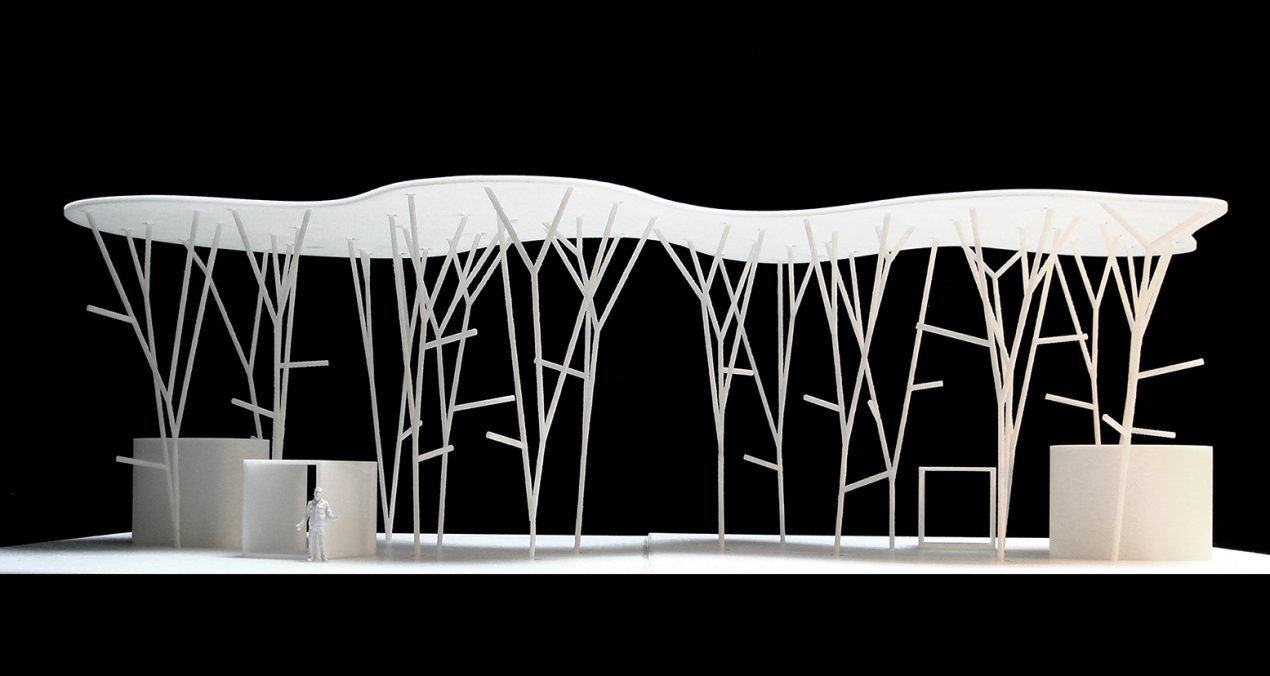



- Cultural & Education
- Completed
- Geneva (2007-2008)
- With group8




Realised in 2008 in the face of the threat of avian flu, this big “greenhouse” is designed to protect birds in the park from coming into contact with others who stop or pass by during their migration. The desire to create a refuge instead of a cage is translated into the simple delimitation of a
Realised in 2008 in the face of the threat of avian flu, this big “greenhouse” is designed to protect birds in the park from coming into contact with others who stop or pass by during their migration.
The desire to create a refuge instead of a cage is translated into the simple delimitation of a portion of nature: a generous, jagged volume within a dispersed forest, on an islet in the middle of a pond. Nine metres high, with a global surface of 300m2, the birdcage talks as equals with its green surroundings. A reinforced 15cm-thick concrete slab plays the role of a roof. Its shape results of a “non-choice” and follows the circumferences of the tree crowns which surround the island. On the edge, fixture points for a mesh made of stainless steel cables are situated, which is stretched from the ground to the upper slab. The structure is composed of metallic tubes of 15cm diameter which engender the shape of fake trees and help the “non-building” to disappear even more into its surroundings.
Behind its apparent simplicity, as a trompe l’oeil, the mesh that is assembled and sewed manually becomes almost invisible from afar and gives the illusion of a natural open space where birds can come and go freely. The birdcage expresses a certain natural simplicity, while in reality it is the result of a sophisticated process by which research and development have been combined, both in terms of structural engineering and architectural gesture.
- ClientCity of Geneva
- Cost1.5M USD
- ProgramCultural & Education
- StatusCompleted
- PhotoPatrick Bingham-Hall
- PartnersINGENI
- Location Le Bois de La Bâtie, Chemin de la Bâtie 20, Petit-Lancy, Geneva, Switzerland